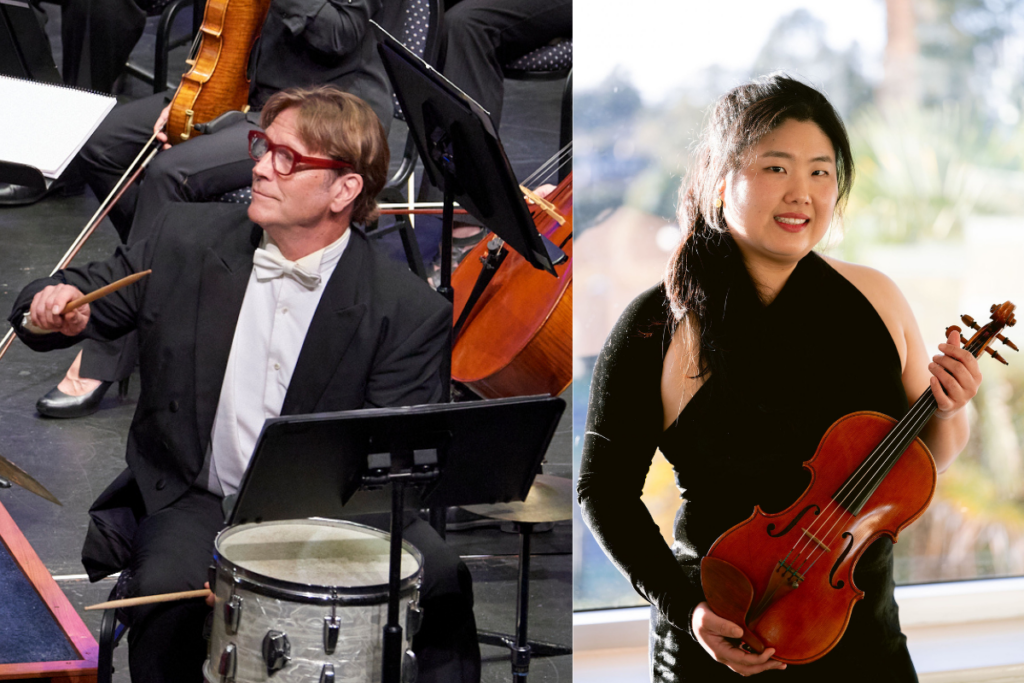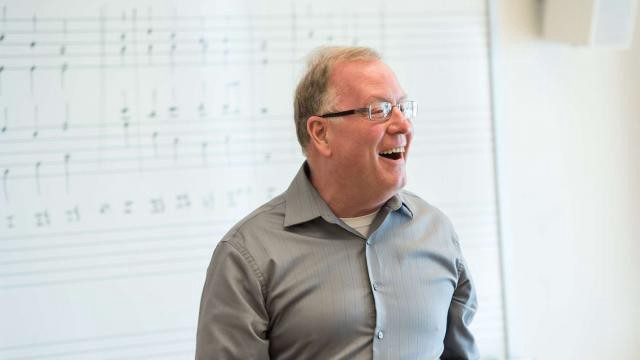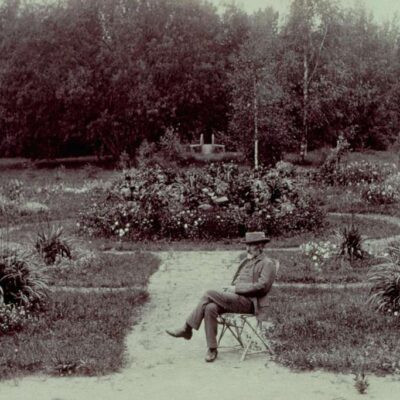
Six flowerpots, dustbins, plumbing pipe, tin cans… You could be forgiven for mistaking the instrumentation for Lou Harrison’s Concerto for Violin with Five Percussionists for a shopping list for ACE Hardware.
This month in MOZART SERENADES, sandwiched between two giants of the wind repertoire—Strauss’ Serenade and Mozart’s Gran Partita—comes a quirky and rhythmic concerto by American maverick composer Lou Harrison. Concertmaster Jennifer Cho becomes the sole strings player on the program, featured alongside five stellar percussionists who use a variety of traditional and non-traditional instruments to create a unique soundscape.
Soloist: Jennifer Cho
Percussionists: Allen Biggs (Principal), Tim Dent, Raymond Froelich, Patti Niemi, Ben Paysen
Jenny – how does it feel to be the only strings player on this concert?
Jennifer Cho, Concertmaster: It feels very strange and a little lonely. I am definitely going to miss having our wonderful string sections for this program, but I will try and represent us well!
The piece is for Violin and Percussion Orchestra – just six musicians in total. How do you prepare to play something like that?
J.C.: Lots of score study. Since I am playing with percussionists who obviously have incredible rhythm, I work a lot on making sure I am not the rhythmic weak link.
Patti Niemi, Percussion: Lou Harrison uses a lot of everyday sounds in his beautiful percussion writing. My part calls for muted pipes and flower pots!
How do you decide who plays what percussion part? How do the parts differ?
P.N. : A principal is assigned for each concert; he or she then assigns the individual parts. In this piece, each part has several different, sometimes unusual, instruments, like coffee cans, pipe lengths, and flower pots.
Any personal links with Lou Harrison, who spent many years in the Bay Area?
J.C.: I have many close friends who knew Lou Harrison personally and played lots of his music. He was loved. A dear friend and wonderful cellist Emil Miland shared Lou’s last words before he passed away “Keep it going.”
Allen Biggs, Principal Percussion: At the Cabrillo Festival we played lots of Lou’s music, especially with conductors Dennis Russell Davies and Marin Alsop. Lou and Bill Colvig were often in attendance at rehearsals and concerts–in fact Bill made some of the instruments we played, according to Lou’s exacting standards and often employing just intonation. Lou’s music is distinctive in sound, and also visually: He was a calligrapher and poet as well as musician, and his penmanship is beautiful.

Can you talk a little about what our audience can expect in this piece?
J.C.: For me, this piece is a joyful celebration of music and movement. There’s an exuberance and excitement to the rhythmic motives and that is really enhanced by the amazing sounds and textures that the unusual percussion instruments provide. It’s a piece that cannot be played standing still.
P.N.: Agreed! Most of the piece has a steady driving rhythm as a background. It’s propulsive and makes the listener want to move.
A.B.: The composer uses a lot of found objects for the percussion section, as if he were imitating an Indonesian gamelan, but using American sound sources. Perhaps it is a little like the idea behind George Gershwin’s First Rhapsody, sometimes referred to as Rhapsody in Rivets, which musically captures the cacophony of a walk through Manhattan, construction sites and all. A first time listener may be surprised how wash tubs, clock coils, brake drums, coffee cans and much more can be utilized so effectively to create not cacophony but musical accompaniment—for a single acoustic violin! The listener gets to decide how effective the orchestration choices are in this unusual and imaginative piece, a composition which blurs the line between concert music and everyday sounds.
Here’s the full instrumentation list for Harrison’s Concerto for Violin and Percussion Orchestra. See how many you can spot on stage:
Violin, 12 brakedrums, 6 flowerpots, plumbers pipe, dampened plumbers pipe, wind chimes (glass and metal), 2 sistra, temple blocks, dustbins, spring coils, cymbals, congas, gongs, double bass laid on its back and struck with sticks, snare drum, tom toms, maracas, 2 triangles, tin cans.
See this percussion dream team in action at MOZART SERENADES, Saturday, March 16 at 7:30 p.m. and Sunday, March 17 at 4 p.m. at the Lesher Center for the Arts in Walnut Creek. Tickets start at $45 and $20 for students 25 and under, and include a free 30-minute pre-concert talk starting one hour before the performance. Buy tickets online or call or visit the Lesher Center Ticket Office at 925.943.7469, Wed – Sun, 12:00 noon to 6:00 p.m.


